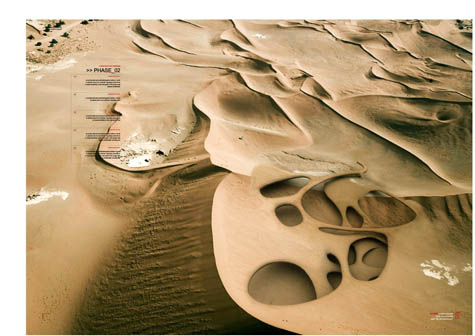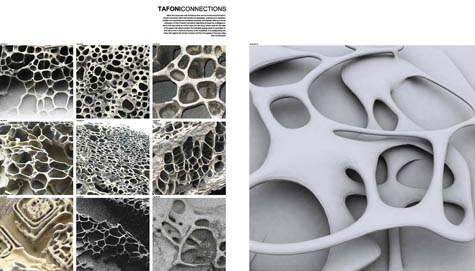
Larsson's project deservedly won first prize last fall at the Holcim Foundation's Awards for Sustainable Construction held in Marrakech, Morocco.
One of the most interesting aspects of the project, I think, is that this solidified dunescape is created through a particularly novel form of "sustainable construction" – that is, through a kind of infection of the earth.
In other words, Larsson has proposed using bacillus pasteurii, a "microorganism, readily available in marshes and wetlands, [that] solidifies loose sand into sandstone," he explains.

The "architectural form" of the resulting solidified sandscape is actually "derived from tafoni," Larsson writes, where tafoni is "a cavernous rock structure that formally ties the project back to notions of aggregation and erosion. On a conceptual scale, the project spans some 6,000km, putting it on a par with Superstudio's famous Continuous Monument – but with an environmental agenda."

Please watch this video
Source: http://www.ted.com/talks/magnus_larsson_turning_dunes_into_architecture.html
http://www.magnuslarsson.com/architecture/dune.asp
http://bldgblog.blogspot.com/2009/04/sandstone.html
thanks belle
ReplyDelete